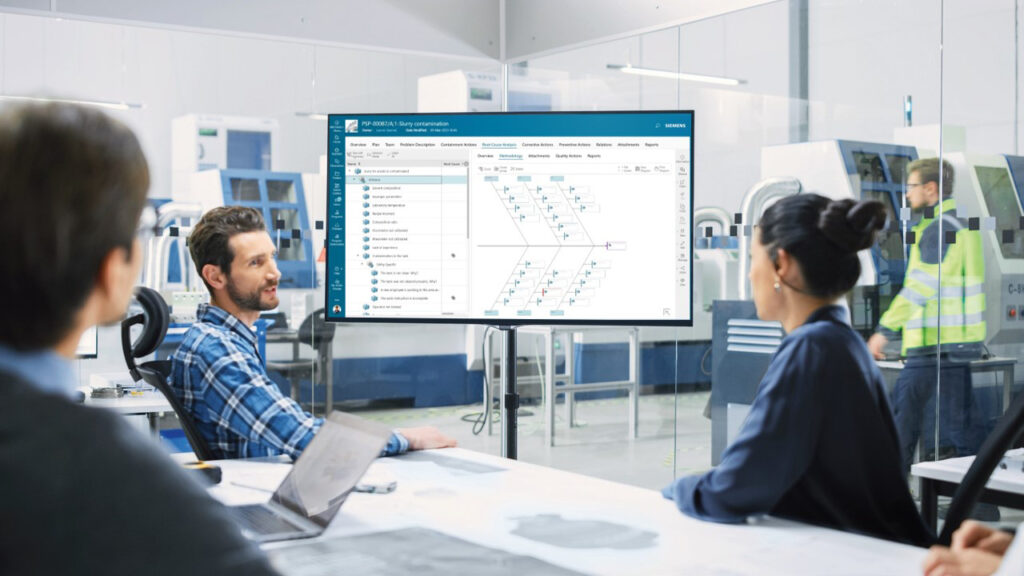Develop an effective problem-solving process for continuous quality improvement

Have you ever wondered about the significance of problem-solving in the realm of continuous quality improvement? Just how crucial is it to understand and efficiently use problem-solving tools in order to continuously improve the quality of your processes and products?
The automotive industry is undergoing a significant transformation with the shift towards electrification. While this presents numerous opportunities, it also brings challenges that need to be addressed, such as producing new electric vehicles and meeting stringent environmental regulations. One way that companies can effectively address these challenges is by implementing continuous improvement methodologies. Continuous improvement enables streamlining of operations, optimizing efficiency, and enhancing product quality. It fosters innovation, facilitates collaboration among teams, and paves the way for cutting-edge technologies and solutions.
Reacting faster with a systematic approach to problem-solving
No matter how robust your planning phase is, problems and defects will occur. When an unexpected issue arises that can impact product quality, it’s essential to react immediately. However, reacting fast is only effective if we deeply analyze the root causes and implement measures to correct them. By doing so, we can not only solve the problem and avoid recurrence but also improve the quality of the product itself.
Managing defects centrally from design to field use with a standardized problem-solving process
A comprehensive Smart Manufacturing approach mitigates risks with a closed-loop approach that integrates product design, manufacturing design, quality, and the supply chain to safeguard compliance and product integrity. By using quality management solutions, OEMs and suppliers can break down barriers and adjust processes based on lessons learned. Design, manufacturing, and quality teams can share the same views about the needed information to continuously improve product and process quality. With continuous improvement and seamless change management, issues are resolved faster, and costs are reduced. When both OEMs and suppliers implement comprehensive and digital quality management solutions, they exceed the quality targets throughout production and satisfy customers with reliable and high-quality products.
Understanding the nuts and bolts of quality problem-solving tools
Throughout your quality journey, you’ve likely encountered and worked with various tools for problem-solving. Central among these are the Root Cause Analysis, Ishikawa Diagram, and the 5 Whys, which are essential for effectively managing any process or system. It’s crucial to standardize your approach by using these tools and adopting a systematic method that guides problem resolution. These tools are more than just problem detectors; they are solution enablers that empower teams to devise strong strategies to avert future instances of similar issues. Their role in quality management is truly vital.

Discover why continuous improvement is crucial for companies and their suppliers in the automotive industry
A continuous improvement approach is essential. In our upcoming webinar on September 28, we’ll explore how it can help companies remain competitive, sustainable, and adaptable in the ever-evolving landscape of electrified vehicles.
We are thrilled to have two special speakers joining us: Pascal Schmitt, Business Development Consultant for Automotive OEM and Julio Anariba, Presales Solutions Consultant for Quality at Siemens Digital Industries Software. Together, Pascal and Julio bring a wealth of experience and expertise to the table.
In the session, together with the speakers will navigate the steps and tools necessary for investigating defects or non-conformances. Using consistent processes, we’ll discuss how to integrate quality issues, problem-solving, and process flow changes to effectively address these challenges. We’ll provide insights on how to streamline supplier quality collaboration and maintain effective communication in such scenarios. Finally, we’ll introduce some effective strategies for managing audits and assessments.
Don’t miss this opportunity to learn from our experts!
They will provide valuable insights and answer any questions you may have about implementing comprehensive and digital quality management solutions in the automotive industry.


